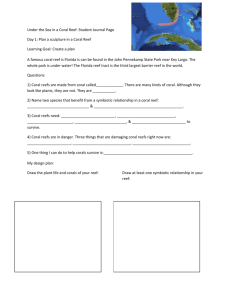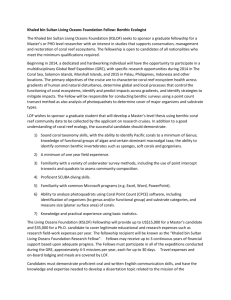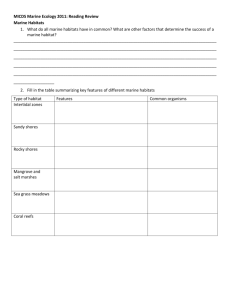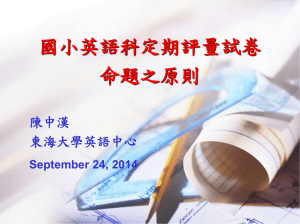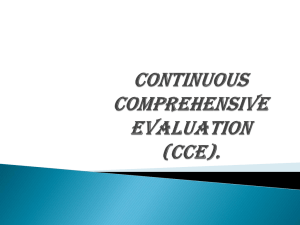Active Learning Activities and Assessments slides
advertisement
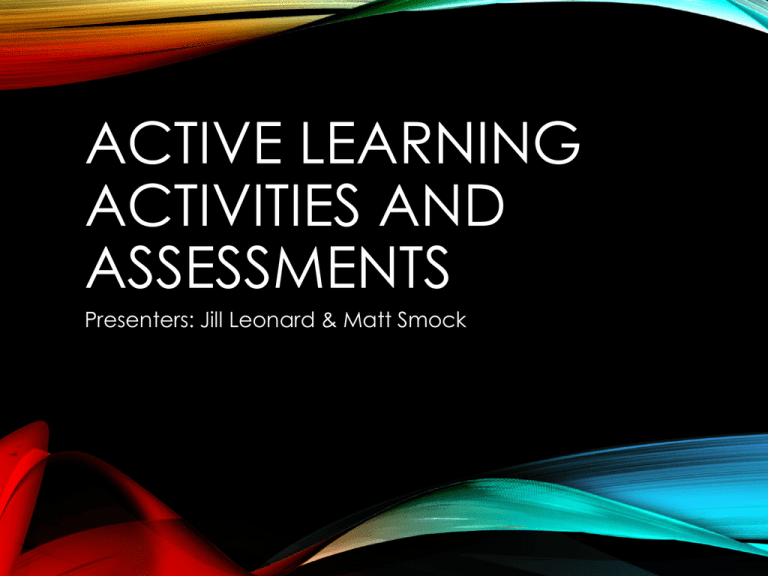
ACTIVE LEARNING ACTIVITIES AND ASSESSMENTS Presenters: Jill Leonard & Matt Smock OBJECTIVES • Characterize the relationship between lecture and in-class activities • Describe different types of active learning activities • Link activities to assessment goals TALKIN’ ABOUT LECTURES… • Research suggests that students can only stay engaged while passively listening for about 15-20 minutes • Recommendation: • “lectures” should be limited to 15 minutes (inperson or recorded) • If need more, break it up • Make your lecture time count! • Use it to explain difficult content • Don’t use it to give basic info that is available elsewhere or using different tools • This time is YOUR TIME to give your insight and expertise that is not available anyplace else EXAMPLE • 50 minute lecture • Major events in U.S. Revolutionary War • Geography of events • Timing of events • Political ramifications of each event • How events sequence together to cause final outcomes • What would you pull out to alter this to be a 15 min mini-lecture while still getting all the material “covered”? DEVELOPING AN ACTIVITY • How long do you want to spend on it? • How large a concept/deep an understanding sought? • Group vs individual • Clear instructions • Clear learning goal(s) for the students • State it verbally and in writing if possible • Links to learning objectives/course learning outcomes ASSESSMENT • Will the activity be assessed? For what purpose? How will it be linked to summative assessments (i.e. student credit) • FORMATIVE ASSESSMENT – Monitor student learning during a learning module/unit • For students – identify strengths and weaknesses that need work • For faculty – recognize issues with student learning • Low Stakes! • SUMMATIVE ASSESSMENT – Evaluate student learning at end of unit • High(er) stakes • Exams, formal papers or presentations, etc. RUBRICS FOR ASSESSMENTS • Basically, a clear guide for the expectations for an assignment • Include what it takes to attain a particular “score” • Scores can be numeric • Scores can be “A”, “B” etc. • Consider having elements to the rubric that address different pieces/aspects of the assignment • Rubrics can be very detailed… OR NOT • Consider the “value” of the assignment to the final grade when considering the detail to put in your rubric • e.g 1-2-3 minute papers Element of the Assignment A level B level C Level D Level Proper grammar No instances of improper grammar Appropriate citations (number and style) More citations than required; all good Appropriate content Contents exceeds assignment guidelines Content meets guidelines, but is superficial Inapprop content Appropriate format All guidelines followed exactly Tries to use appropriate format; minor issues with application Didn’t follow guidelines at all 4-5 instances of improper grammar Excellent citations but no extras; Extra citations, but not all good Meets citation requirement; minor citation issues F Level Many instances of poor grammar Some good citations; but does not meet requirement Assignment Grade = C+ No cites SMALL ACTIVITIES • 1-5 minutes • Intersperse between mini-lectures • Help keep lectures short! • Great “on-the-fly” activities Think-pair-share iClicker questions (multiple choice or fill in) Explain to your neighbor Muddiest point Minute paper Short group quiz One sentence summary SMALL ACTIVITY EXAMPLE: THINK-PAIR-SHARE What the students do… What the instructor does… • Pose a question • As an individual, think about answer to a question (think) • Pair of students discusses their answers to the question (pair) • Pair gives answer to the larger group (share) • Manage timing of think-pairshare • Solicit answer from the groups (multiple groups) • Lead discussion of differences in the answers given • Ensure that there is solid answer at the end for the entire group (maybe even post it!) TRY IT! • Come up with a specific example of a think-pair-share that you could do in your class • Share your example with a partner • Be ready to report out on commonalities between your exercises • How will you assess this activity? • Formative vs summative? MID-SIZE ACTIVITIES • Take 5-20 minutes • Not the only element of a class session, but substantial time investment Pro-con grids Comparison tables Lists of elements to a topic Concept maps Cartooning Produce a model Annotation Problem solving/comparing problems/proofs EXAMPLE: COMPARISON TABLE What the students do What the instructor does • Figure out the assignment components (forming an approach) • Develop the comparison assignment with clear learning goal • May assign tasks to group members • Roam between groups and observe and facilitate as needed • Do assignment • Report out • Time management • Conduct report out • Ensure wrap up addresses misconceptions TRY IT! • Come up with a COMPARISON or a PRO-CON topic that could be used for a midsize activity • E.g. compare sharks and tuna Share your example with the other faculty at your table As a group, consider what needs to be taken into account to make these activities work The group should make a list of important aspects to consider for this type of activity that can be shared with the entire workshop group • How will you assess this activity? • Formative vs summative? BIG ACTIVITIES • Take the entire class period (or even two!) • Save these for big, important concepts • Excellent for higher level thinking skills (integrative, critical, etc.) Case studies Jigsaws Request for proposals Problem series Role play EXAMPLE: JIGSAWS What the students do What the instructor does • Do prep work on expert area (reading?) • Come up with sources for expert materials • Work together to solidify expert status • Develop integrative assignment for mixed group • Shift to group with experts in other areas and explain their expertise • Explain learning goals for activity • Work on integrative problem with group • Come up with product to share • Manage assignment to expert and mixed groups • Manage time spent in groups • Roam between groups and facilitate as needed • Guide report out • Assure clear outcomes and correct misconceptions JILL’S JIGSAW AS REAL EXAMPLE • Learning Goal: Students analyze the importance of the various threats to coral reefs. • Students read one of four papers prior to class meeting • • • • Coral reef diseases Different species affected by coral bleaching Reef losses in different regions of the world Effect of eutrophication on coral reef bleaching • Student who read the same paper group together and go over the paper (hypotheses, methods, results, etc.) (BECOME AN EXPERT) • Students regroup into group with one individual who is an expert on each paper • Explain their paper to others in group • And then… 20 DEVELOP A CORAL RESEARCH GRANT PROGRAM • As a group, you are tasked with developing a new program to fund coral reef loss research projects • You can give away $1 million per year • Decide: • What the focus of the program should be (are you interested in funding projects in a particular area or being really general?) • What will the maximum amount of $ you give to a single project be (will you fund many smaller projects or a few large ones) • Hint: a case study on a single reef that uses a grad student to do the work would cost ~$30-50K; large projects could cost ~$300K1mill. • Do you want to fund basic research, applied research, or both? • Write this program down as a group (electronically submit – PUT NAMES ON IT) AND be ready to present it orally to the class • How will you assess this activity? • Formative vs summative? BACK TO OUR EXAMPLE • 50 minute lecture 1. Major events in U.S. Revolutionary War 2. Geography of events 3. Timing of events 4. Political ramifications of each event 5. How events sequence together to cause final outcomes • What type of activity for #5 would you recommend to follow a mini-lecture on Political Ramifications, assuming pieces 1-3 were covered as prep work for the class (homework)? TAKE HOME MESSAGES • Mini-lectures can have a role • Faculty are important in guiding learning • Lots of options for students to be active • Consider the time to spend on activities • Include assessment! • Include wrap-up on all activities to give students context and find any misconceptions

